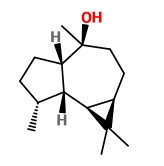Mentha aquatica L. - Lamiaceae - water mint, Wasser-Minze, Bachminze
Subordinate taxa are:
Mentha aquatica var. citrata, syn. Mentha citrata Ehrh., lemon mint, bergamot mint
Mentha aquatica var. aquatica, syn. Mentha palustris Mill., water mint
http://www.ars-grin.gov/cgi-bin/npgs/html/taxon.pl?463704
„The composition of the essential oils from two populations of Mentha aquatica ssp. aquatica collected in two different habitats in Migliarino-San Rossore-Massaci-uccoli Regional Park (Italy) has been determined by GC and GC/MS. The oils were found to be rich in menthofuran (38.4-55.9%) and 1,8-cineole (11.9-16.3%).“
[Variability of essential oil composition of Mentha aquatica ssp. aquatica collected in two different habitats of North Tuscany, Italy. Guido, S., Alessandra, B., Guido, F., Luigi, C. P., Emilio, T. P., Journal of Essential Oil Research, Vol.9(4), 1997, 455-457]
„Mentha aquatica L. is used in Zulu traditional medicine for spiritual purposes and an ethanolic leaf extract has previously shown strong affinity to the GABA-benzodiazepine receptor. Viridiflorol from the essential oil and (S)-naringenin from an ethanolic extract was isolated by bioassay-guided fractionation using binding to the GABA-benzodiazepine site. Viridiflorol had an IC50 of 0.19 M and (S)-naringenin of 0.0026 M.“
[Compounds from Mentha aquatica with affinity to the GABA-benzodiazepine receptor. Jäger, A. K., Almqvist, J. P., Vangsøe, S. A., Stafford, G. I., Adsersen, A., Van Staden, J., South African Journal of Botany, Vol.73(4), 2007, 518-521]
„To isolate the compound(s) responsible for the MAO-inhibitory activity…. Six extracts of varying polarity of Mentha aquatica L. were tested in a photometric peroxidase linked MAO bioassay. The 70% ethanol extract had highest inhibitory activity. (S)-Naringenin was isolated from the extract by bioassay guided fractionation on VLC and preparative TLC…. The IC50 values for MAO inhibition by naringenin were 342 ± 33 μM for the rat liver mitochondrial fraction, 955 ± 129 μM for MAO-A and 288 ± 18 μM for MAO-B…. The content of naringenin in Mentha aquatica might explain its use in traditional medicine for depression-like conditions.“
[Isolation of the MAO-inhibitor naringenin from Mentha aquatica L., Olsen, H. T., Stafford, G. I., van Staden, J., Christensen, S. B., Jäger, A. K., Journal of ethnopharmacology, Vol.117(3), 2008, 500-502]
„ VOCs emitted by untreated M. aquatica were analyzed by SPME, which revealed the presence of two major compounds, (+)-pulegone and (+)-menthofuran, along with other minor terpenoids including the monoterpenes (−)-limonene, (−)-menthone and α-terpineol, and the sesquiterpene, (E)-β-caryophyllene. However, it is important to note that the major compounds were emitted at much higher levels (0.13–0.75 µg g−1 f. wt) than the minor compounds in the range of 3–35 ng g−1 f. wt. The feeding activity of C. herbacea significantly changed the quantitative VOC composition of M. aquatica VOC emissions by dramatically increasing the content of (+)-menthofuran and decreasing the content of (+)-pulegone. The levels of all minor compounds, with particular reference to myrcene, were also elevated significantly upon herbivory; with the sole exception of p-cymene, which declined significantly….
In the attracting blend of terpenoids produced by M. aquatica, (+)-pulegone was found to be the major compound in undamaged leaves and a potent attractant to C. herbacea in olfactometer bioassays. Volatiles emitted from plants can stimulate the behavioral or antennal responses of herbivores. As a response to herbivore feeding, M. aquatica activates genes for terpenoid biosynthesis, diverting most of the terpene production toward the synthesis of (+)-menthofuran, which was found to repel C. herbacea in bioassay tests.“
[Zebelo, S. A., Bertea, C. M., Bossi, S., Occhipinti, A., Gnavi, G., Maffei, M. E. (2011). Chrysolina herbacea modulates terpenoid biosynthesis of Mentha aquatica L. PloS one, 6(3), e17195] http://www.plosone.org/article/info%3Adoi%2F10.1371%2Fjournal.pone.0017195
Mentha aquatica; author: Rolf Marschner (2006),
www.botanische-spaziergaenge.at


